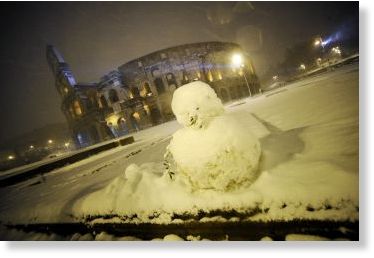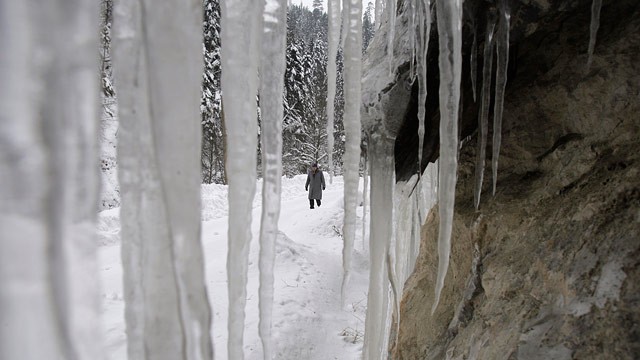
© Filippo Monteforte/AFP/Getty ImagesA photo taken on February 4, 2012 shows an snowman in front of the ancient Colosseum in Rome after a snowfall.
A weeklong cold snap has now claimed more than 220 lives across Europe, with forecasters warning that the big freeze - which has even blanketed Rome in snow - would tighten its grip over the weekend.
A total of 223 people have died from the cold weather in the past seven days, according to
Agence France-Presse, in what has become the harshest European winter in decades.
Ukraine suffering the highest toll - with 101 deaths recorded since the cold snap began. Temperatures plummeted as low to -16.6 degrees in the capital Kiev. Poland, Bulgaria and Romania also recorded high death tolls.
According to AFP, the dead included hundreds of homeless people who have frozen to death.
The cold has extended as far south as Serbia, where thousands were trapped under heavy snow and blizzards in the country's mountain villages.
In Italy, up to three inches of snow fell in some districts of the Italian capital, and the Colosseum was closed to prevent visitors slipping on ice or damaging the structure.


Comment: For a clearer picture of these cycles, read Fire and Ice The Day After Tomorrow